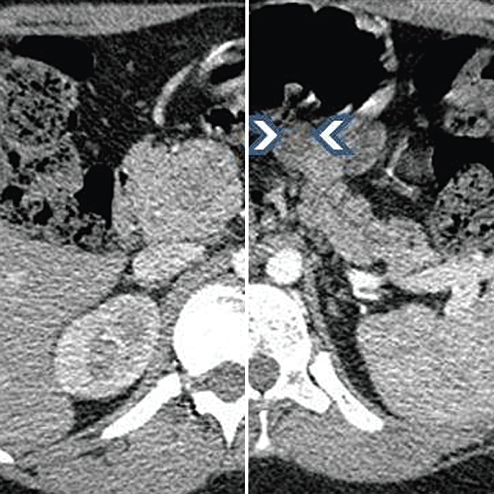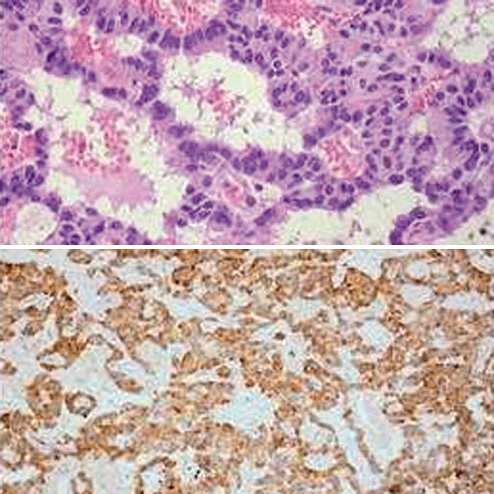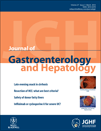Hepatobiliary and Pancreatic: Pancreatic VIPomas associated with multiple endocrine neoplasia type I
A teenager, aged 15, was referred for evaluation because of chronic diarrhea, sometimes accompanied by abdominal pain, nausea and vomiting. There had been several hospital admissions for correction of fluid and electrolyte disorders. Typical blood tests on admission showed a metabolic acidosis and severe hypokalemia. He also had hypercalcemia, an increased serum concentration of parathyroid hormone (130 pg/ml) and imaging studies showing an enlarged right parathyroid gland. He was initially treated with a total parathyroidectomy because of multiglandular hyperplasia. However, multiple endocrine neoplasia type I (MENI) was suspected and additional investigations were performed including a contrast-enhanced computed tomography (CT) scan of his abdomen and magnetic resonance imaging (MRI) scans of his abdomen and head. The MRI scan of his head revealed a small mass (5 mm) in the pituitary gland. The CT scan revealed two pancreatic tumors; a 3.8 cm mass in the head of the pancreas (Figure 1 left) and a 1.2 cm mass in the body of the pancreas (Figure 1 right, arrowheads). His surgical treatment included resection of the head of the pancreas (Whipple's procedure) and enucleation of the tumor from the body of the pancreas. Within 1 week of surgery, his diarrhea had resolved and his serum potassium had returned to normal. Histology revealed neuroendocrine tumors of uncertain malignant potential (Figure 2, above) with positive immunohistochemical staining for chromogranin A and vasoactive intestinal peptide (VIP, Figure 2, below). The neoplasms were also focally positive for glucagon but negative for proinsulin, gastrin, serotonin and somatostatin. His family history was helpful as his father had complicated peptic ulcer disease caused by a pancreatic gastrinoma and was treated with a subtotal gastrectomy.


MENI is an uncommon disease with a prevalence of approximately 1:30,000 people. It is caused by mutations in the MENI gene that encodes a protein called menin. The most common clinical manifestation is hyperparathyroidism that occurs in approximately 90% of patients. Most patients also develop neoplasms in the pancreas that may be non-functional or may result in the secretion of hormones such as gastrin, insulin, glucagon, somatostatin and VIP. VIPomas are extremely rare with an estimated annual incidence of 1:10 million people. With immunocytochemistry, some VIPomas can have positive staining with other hormones such as pancreatic polypeptide, glucagon and somatostatin. For patients without metastases, the treatment of choice is surgical excision of the neoplasms. This usually results in improvement or resolution of diarrhea.
Contributed by




